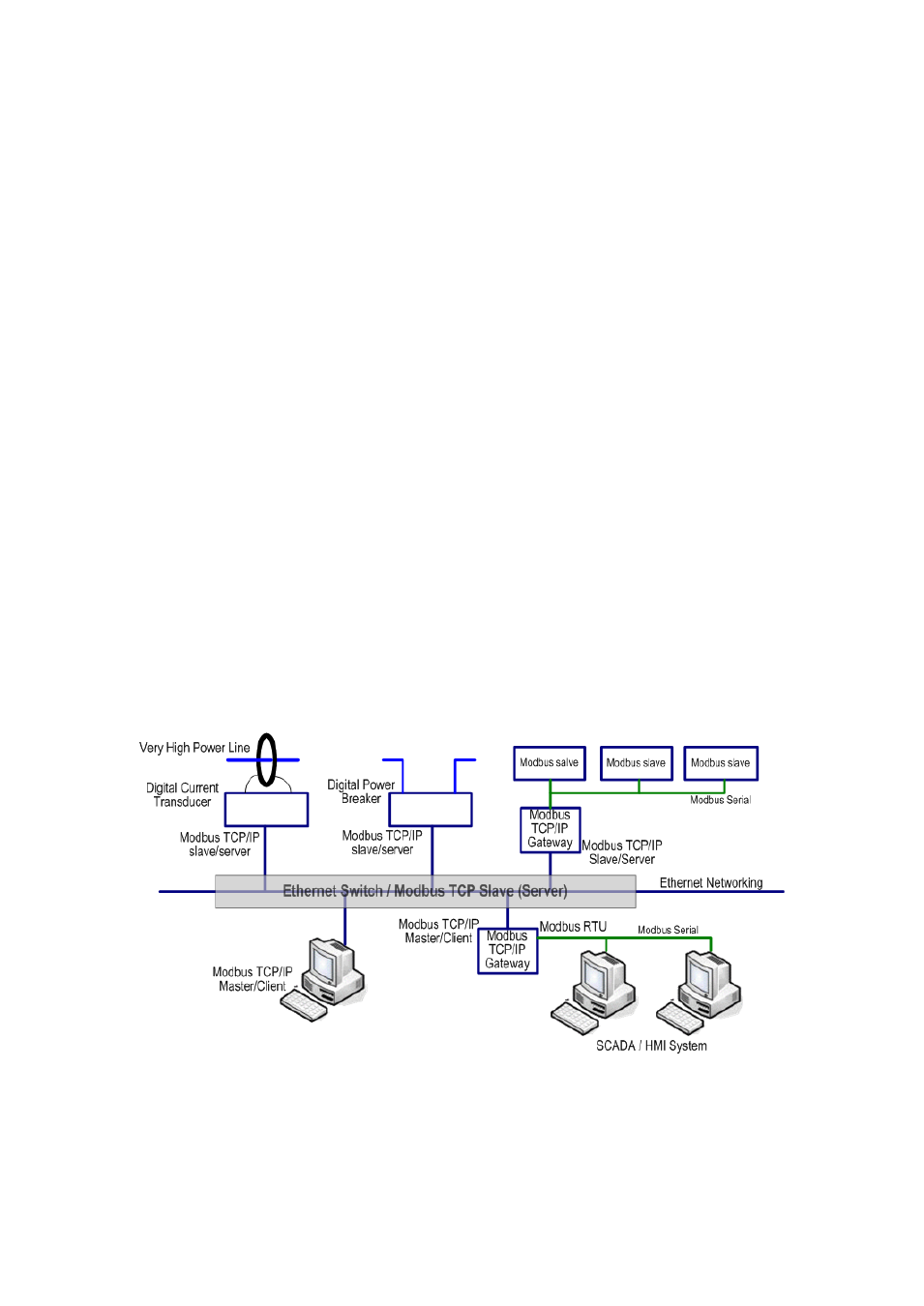Modbus tcp /ip – Westermo MDI-112-F4G User Manual
Page 159

155
5.3
ModBus TCP/IP
The Modbus TCP/IP is very similar to Modbus RTU, but transmits data within TCP/IP
Data packets. It was developed in 1979 for industrial automatic communication
system and have becomes a standard protocol for industrial communication for the
transfer discrete analog I/O devices or PLC systems. It defines a simple protocol data
unit independent of the underlying data link layer. The Modbus TCP/IP packet
includes 3 parts - MBAP header, function code and data payload, the MBAP header is
used on TCP/IP header to identify the Modbus application Data Unit and provides
some differences compared to the Modbus RTU application data unit used on serial
line. The MBAP header also includes unit identifier to recognize and communicate
between multiple independent Modbus end units.
The Modbus devices communicate using a master (client) /slave (server) architecture,
only one device can initiate transaction and the others respond to the master/client.
The other devices (slave/server) respond by supplying the requested data to the
master/client, or by taking the action requested in the query. The slave/server can be
any peripheral device (DSC unit, PLC unit, Volt/Current Transducer, network
communication switch) which process information and sends the output data to the
master using Modbus TCP/IP protocol. The Managed Switch operating as slave/server
devices, while a typical master/client device is host computer running appropriate
application software, like as SCADA / HMI system. The transaction architecture like as
the drawing following.
There are three most common Modbus versions, Modbus ASCII, Modbus RTU and
Modbus TCP/IP. Ethernet based device, Industrial Ethernet Switch for example,